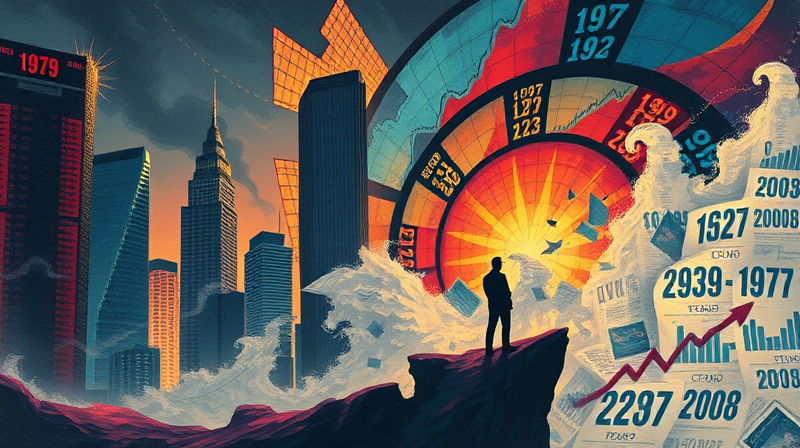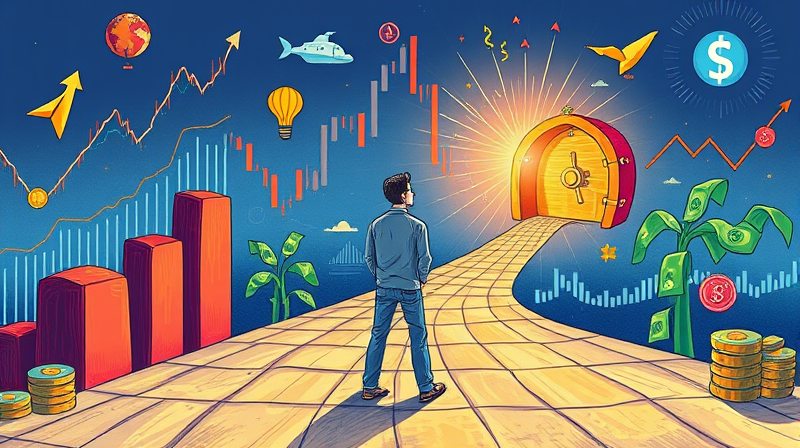
The unfolding events of April and May 2025 have thrust global finance into a period of intense reflection. As tariffs spread across nearly every economic sector, investors were jolted by unprecedented global volatility and panic selling, drawing echoes of previous market cataclysms.
This article explores how the current crisis parallels historical downturns, what triggered the sell-off, and what risks lie ahead for policymakers and investors.
On April 2, the U.S. government imposed sweeping tariffs, igniting what many now call the "Liberation Day" crash. Key benchmarks tumbled, with the S&P 500 down 20% in April and a further 7% decline by May. Analysts warned of a potential 50% drop if tensions continued.
Alongside the equity sell-off, bond yields first fell as investors sought safe havens, then spiked dramatically as confidence in fiscal policy eroded. This rapid reversal vindicated fears of a feedback loop of panic selling.
Meanwhile, massive investments in artificial intelligence by leading tech firms fueled speculation. With tens of billions poured into AI rollouts, many now fear an AI-driven speculative bubble dynamics echoing past manias.
Market historians have long noted that crises often recurring collapses in financial history follow similar patterns: speculation, policy shifts, forced liquidations, and widespread fear.
Each episode featured a sudden shock—be it disease, policy error, or systemic imbalance—followed by deep losses and, in some cases, eventual recovery.
Beyond headline events, several structural issues laid the groundwork for the 2025 downturn:
International negotiations faltered as the EU and other partners struggled to match U.S. tariff rollbacks, leaving markets caught between hope and anxiety.
Douglas McIntyre of 24/7 Wall St. cautioned that structural risks could drive the S&P down by another 50% if AI hype unwinds and tariffs deepen. Historians emphasize these recurring themes:
Speculative manias often precede major crashes, from 19th-century railroads to dot-com stocks. Policy missteps, especially trade barriers, regularly trigger downturns, as seen in the 1930s and 1970s.
The feedback loop of panic selling and forced liquidations remains a potent threat, capable of amplifying minor corrections into full-blown crises.
Despite recent rebounds, uncertainty remains high. Key warning signs include:
Investors should monitor margin levels, central bank responses, and international trade negotiations for clues to the next market move.
History offers mixed signals. After Black Monday, markets recovered within two years. The 2020 crash rebounded in months, thanks to fiscal and monetary stimulus. Conversely, the 1929 collapse led to a decade of hardship.
Whether the 2025 downturn follows a V-shaped, U-shaped, or L-shaped path depends on policy coherence and the resilience of corporate earnings. Long-term structural risk factors like high debt levels and geopolitical fragmentation could prolong the slump, while decisive global cooperation might accelerate a rebound.
While each market collapse carries unique features, the lessons from previous market downturns remain crucial guides. Investors and policymakers must balance swift action with measured caution to avoid policy whiplash.
Understanding the parallels between 2025 and past crises does more than satisfy academic curiosity; it equips stakeholders with the context to navigate uncertainty and shape strategies for resilience.
References













